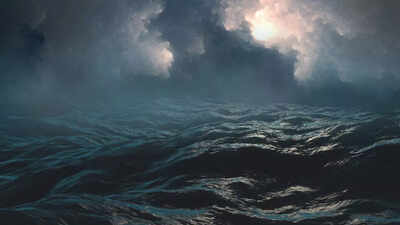ARTICLE AD BOX

While oceans are often known for their tides, currents, and marine life, they also witness some rare natural events that many people don’t know about. These unusual phenomena don’t happen often, but when they do, they catch the attention of sailors, scientists, and people living near the coast.From glowing lights in the sky during storms to twisting water columns and strange waves caused by pressure shifts, the ocean can behave in ways that are surprising but completely real. In this article, we look at five rare but scientifically recognised ocean events that show just how unpredictable and fascinating the sea can be. Note: This list draws reference from information available on the National Ocean Service website.St. Elmo’s FireThis rare phenomenon usually happens during strong storms, especially out at sea. When the air becomes highly charged with electricity, it can create a soft blue or violet glow around pointed objects like ship masts or airplane wings. This glowing effect, caused by ionised air, is known as St. Elmo’s Fire.

In the past, sailors saw it as a spiritual sign, but today it’s understood as a natural electrical discharge that occurs during intense weather.
While it’s not harmful on its own, it’s a sign that a powerful thunderstorm is nearby.Fog tsunamiAlong some coastlines, especially in early summer, huge walls of fog can suddenly roll in, looking like a giant wave crashing over the land. This kind of fog forms when warm, moist air moves over colder ocean water, causing thick condensation. Winds then push the fog inland, making it move quickly and dramatically.These fog events are harmless but can cause serious visibility problems, often delaying flights and affecting ships at sea.
They’re completely natural but don’t happen very often, usually showing up in places where there’s a big difference between land and sea temperatures.MeteotsunamisNot all tsunamis are caused by earthquakes. In rare cases, sudden changes in air pressure– usually from fast-moving storm systems– can push ocean water and create waves that look like tsunamis. These are called meteotsunamis.

They’re usually smaller than earthquake-related tsunamis, but if they reach narrow places like harbours or gulfs, the waves can grow bigger and stronger as the energy gets trapped.
Their size and impact depend on the weather, how fast the storm is moving, and the shape of the coastline.WaterspoutsWaterspouts are spinning columns of air that stretch from the clouds down to the surface of the ocean or large lakes. There are two main types: fair-weather waterspouts, which are usually mild, and tornadoic waterspouts, which form during storms and can be much more dangerous.Tornadic waterspouts act like tornadoes over water, bringing strong winds and rough seas.
Even though fair-weather waterspouts are generally weaker and don’t last long, they can still pose risks to boats and smaller vessels. These are most often seen in tropical and coastal areas, including parts of India during the monsoon season.

MaelstromsMaelstroms form when strong ocean currents collide, creating a spinning, whirlpool-like motion on the water’s surface. While they’re not as dramatic as the giant whirlpools shown in movies, real maelstroms can still be dangerous, especially for small boats or underwater gear.They usually appear in narrow channels or straits where water flow is fast and forced through tight spaces. Though not very common, maelstroms are a powerful reminder of how much force the sea can hold just beneath the surface.



.png)
.png)
.png)
















 1 day ago
10
1 day ago
10









 English (US) ·
English (US) ·